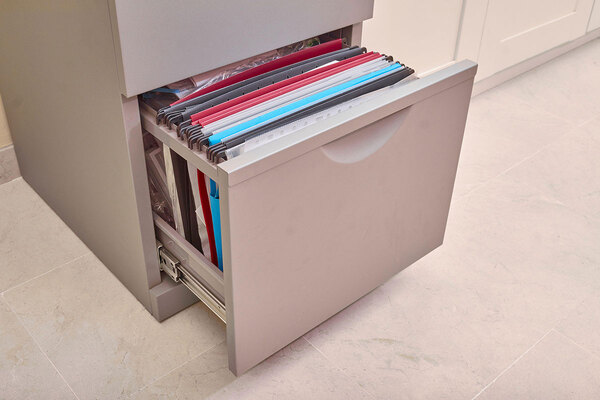What progress has the sector made to plan and prioritise decarbonisation projects?
A survey run by Inside Housing in association with Mears asked the housing sector about its strategies, priorities and challenges when it comes to achieving net zero carbon
In association with:

The transition to net zero carbon by 2050 is the next big challenge for the housing sector. Legislated by government in 2019, the target includes the more pressing milestones of achieving a 78% reduction of emissions by 2035, installing 600,000 heat pumps per year by 2028 and achieving Energy Performance Certificate (EPC) Band C in all homes by 2030.
With five million properties under management across the social housing sector, landlords will play a vital role in meeting these goals. However, a recent survey by Inside Housing, in partnership with Mears, suggests much work is still to be done.
From getting a clear strategy in place and identifying what stock needs retrofitting, to prioritising certain works or gaining funding, our findings show that landlords still have a number of hurdles to overcome in working towards these green goals.
Opportunity to collaborate
A total of 97 organisations across the UK were surveyed, of which 57% were housing associations, 19% were local authorities and 6% were ALMOs. The remainder were a mix of other organisations working in the sector.
Of those surveyed, only 23% said they had developed a clear strategy to reach net zero, with nearly 40% saying they were in the process of developing a strategy and a smaller but still significant 8% admitting that they had no strategy at all.
Alan Long, executive director at Mears, says this is not surprising, given “the drip feed of government funding available”.
But he adds that this presents an opportunity for the sector: “By working across the public and private sectors, including supply chains, we should be ready to share knowledge, be honest about what is achievable and when, and not to be afraid to tell government when there are capacity issues.
“A key issue will be the re-skilling of the sector workforce, and this is an area which can only be resolved with the combined commitment of all parts of the sector, whether public or private.”
Most social landlords – 60% – are still in the process of assessing their homes to see which ones will need retrofitting. However, a worrying 20% said they have not yet done this kind of stock evaluation.
For those who were further along on their net zero journey, the survey looked to understand what maintenance and repair works were being prioritised.
A sizeable 47% of respondents said they were focused on insulating properties, while only 13% said they were concentrating their efforts on heat pumps and 7% were looking at sustainable materials.
Solar panels (3%), smart metering (3%) and air quality (1%) were lower down the priority list for organisations.
A number of respondents anecdotally said they would be prioritising a fabric-first approach, which looks to maximise a building’s energy performance through its components and materials to reduce a home’s heat loss.
This includes Riverside, whose head of asset investment and delivery, Bryan Simpson, took part in the survey. “Our approach is fabric first and then we’ll look at the heating solutions,” he said. “So… probably we’ve got another 10 years of cyclical replacement gas boilers until we start to really engage with a mainstream planned investment of alternative energy.”
There are a number of reasons for this, he said. “If we suddenly started putting loads of air source heat pumps [into properties], people on gas will have a sudden price increase because electric at the minute is more expensive than gas.”
He added that there are also unknowns about how tenants would “engage” with the technology, given that it works differently to central heating. And if a fabric-first approach is not taken, then properties run the risk of losing heat quicker than it enters, Mr Simpson added.
Another respondent agreed that a fabric-first approach is “correct” but stressed that it is not a one-size-fits-all solution. They said: “For existing stock, we suggest achieving net zero carbon cost-effectively and with minimal disruption. This approach requires both cost-effective fabric improvements and low-carbon heating technologies and renewable generation (such as PV/thermal) when it makes the most sense to implement them. The principle of fabric-first is correct, but it should be viewed as just that, a principle and not a dogma. Otherwise, it runs the risk of becoming implemented as ‘fabric at any cost’.”
In numbers
40%
Percentage of respondents that are in the process of developing a net zero strategy
25%
Percentage that cite skills as the main barrier to following through with net zero plans
8%
Percentage that have no net zero strategy
Funding challenges
The findings also highlighted the cost of transitioning to net zero. Nearly 27% of respondents said they anticipate spending between £15,001 and £25,000 on repairs and maintenance on each home to reach net zero.
A separate 3% of respondents said the cost per home would be as much as £50,000. Mr Simpson estimates that it will cost his organisation £70m in total between now and 2030, rising to £1bn to reach the 2050 net zero target.
Despite the clear high costs associated with going green, less than 50% of respondents said they had applied for funding. One respondent told Inside Housing that conflicting criteria for certain pots of funding – such as the Social Housing Decarbonisation Fund (SHDF), the Local Authority Delivery (LAD) scheme or the Home Upgrade Grant for the private sector – made it a challenge to access financial support.
They said: “The problem is SHDF funding only enables you to invest where less than 30% of the properties are [classed as] private [sector]. And the flip side to that is that LAD funding only allows you to invest in 30% of property that is social housing. So, if you’re in the middle where you’ve got 50/50 [of social/private], which one do you go for? Because you don’t fulfil the criteria for either one.”
Skill gaps will likely become an issue as the sector presses ahead with its net zero plans, with 25% of respondents citing this as a main barrier.
In addition, only 10% of respondents said they have a skilled repairs and regeneration team to do all the work in-house. A total of 21% said they had a team in place but were recruiting, and another 21% said they were using a direct labour organisation (DLO).
This left a significant 49% who were opting for alternative delivery options. Many of these anecdotally said they would be using external contractors, with some using both contractors and a DLO.
One respondent said: “We see capacity issues within the supply chain from accredited installers of energy efficiency and renewable energy technologies. Likewise, there are insufficient numbers of retrofit assessors and co-ordinators both on the client and contractor side.”
A further 58% said they had considered specific training for their repairs and maintenance team, while 28% said they had purchased a small amount of new technology to help their team maintain properties.
An encouraging 15% of respondents said they were likely to reach their net zero goals early, however more than a third said they would not and 50% said they were unsure if they would.











